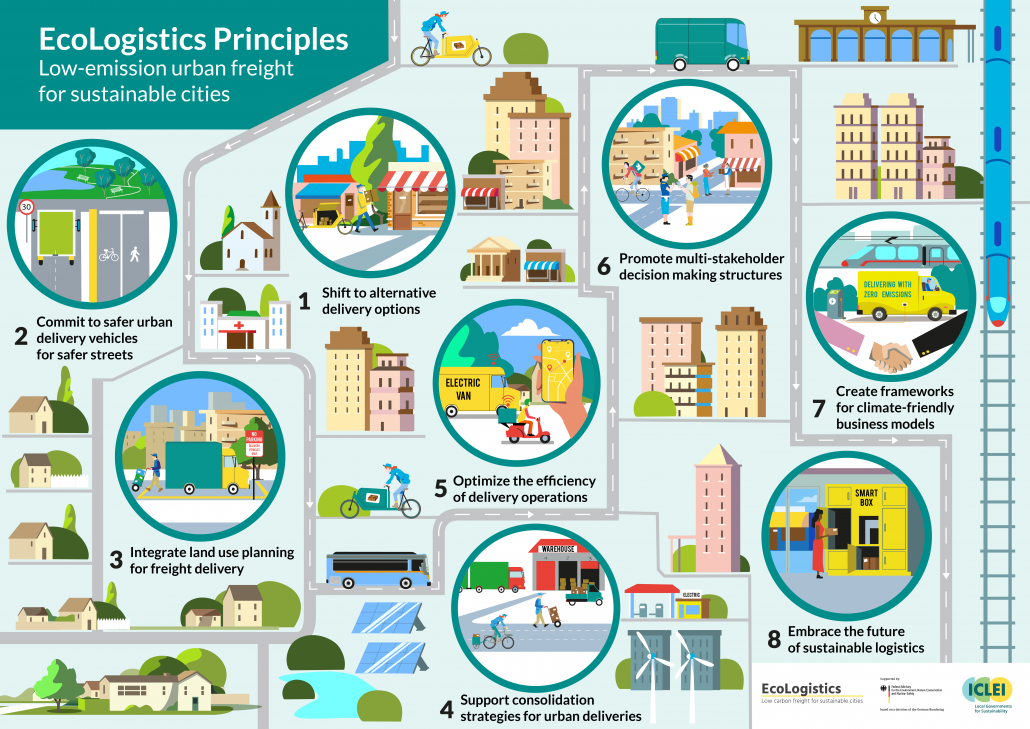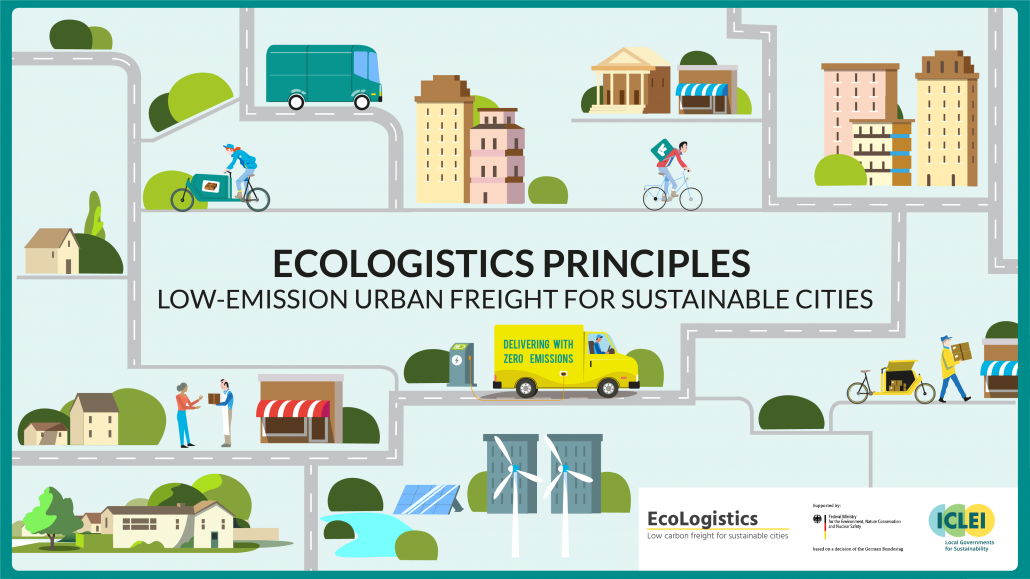1. Shift to alternative delivery options
Last mile deliveries account for one quarter of logistics supply chain emissions and are often inefficient. These deliveries can be shifted to sustainable delivery options using non-motorized vehicles, and the use of electric vans should be promoted to improve efficiency and performance of the urban freight system. Low-emission alternatives to road transport, such as waterways and urban rail can also reduce emissions.
2. Commit to safer urban delivery vehicles for safer streets
Delivery vehicles, in particular heavy trucks, are disproportionately responsible for traffic injuries and fatalities. A comprehensive program for safer vehicles, speeds, streets and behaviors can reduce the likelihood of road crashes. Governments can enforce a safe system for vehicles and fleet operations, raise driving standards and ensure compliance, provide targeted training and reduce speed limits to protect vulnerable road users where infrastructure must be shared.
3. Integrate land use planning for freight delivery
Land use is generally planned and implemented at the local level, using the comprehensive plan, zoning code and permitting system. City policymakers should introduce policies and rules for the movement of goods into urban planning. Land use planning policies should take into account the management of curb space for freight vehicles, waiting and loading/unloading bays and shared use for deliveries.
4. Support consolidation strategies for urban deliveries
Consolidation allows for improved load utilization and can reduce delivery vehicle numbers and kilometers. Small urban consolidation centers, in combination with electric vehicles and cargo bikes, can enhance urban delivery cost- and energy-efficiency. Governments can identify suitable funding models and provide adequate infrastructure for appropriate consolidation and distribution activities.
5. Optimize the efficiency of delivery operations
With ever-improving data collection technologies, urban freight service providers can use services such as route optimization, telematics for vehicles, driver monitoring and training to improve delivery operations. Governments can use collected data to understand the freight movement in their cities and make informed decisions.
6. Promote multi-stakeholder decision making structures
Sustainable urban freight is difficult to achieve without the active engagement and support of stakeholders in both public and private sectors. Urban freight roundtables and forums should be established for efficient and targeted discussions and negotiations.
7. Create frameworks for climate-friendly business models
New business models and technological innovations may radically change the way the freight industry operates. Policymakers should introduce regulatory and pricing incentives and procurement policies to support the use of low emission vehicles and create frameworks that enable freight operators to move toward climate-friendly business models.
8. Embrace the future of sustainable logistics
Advances in technology make just-in-time deliveries for many commercial establishments and consumers possible. Local governments should use communications channels and campaigns to raise awareness of the impact of delivery options and encourage consumer behavior change. Policy-makers can also set up training programs for logistics jobs to raise the profile of the freight sector.





